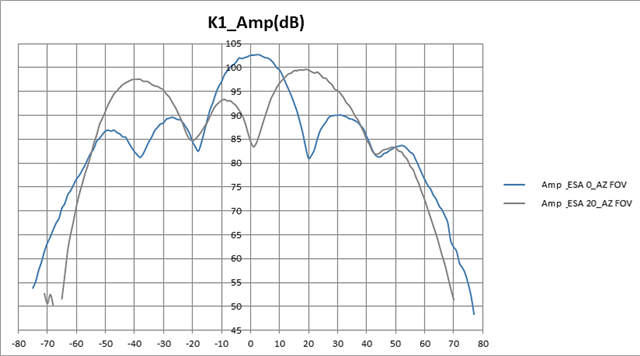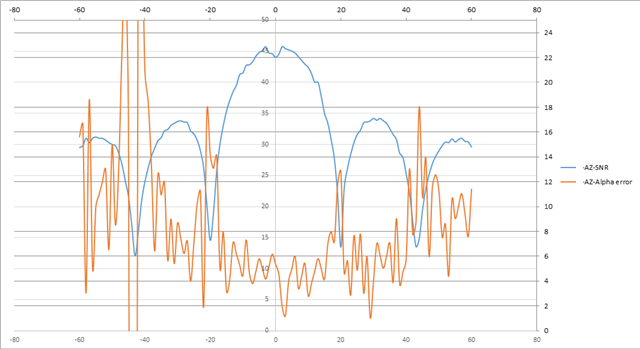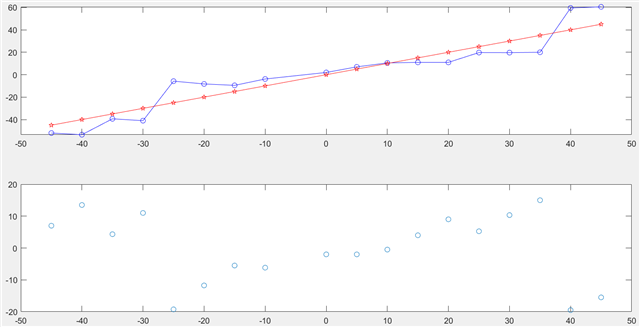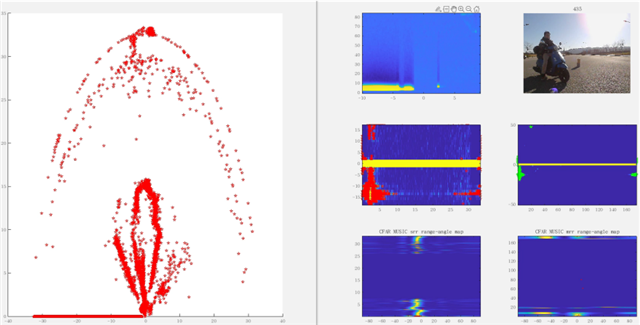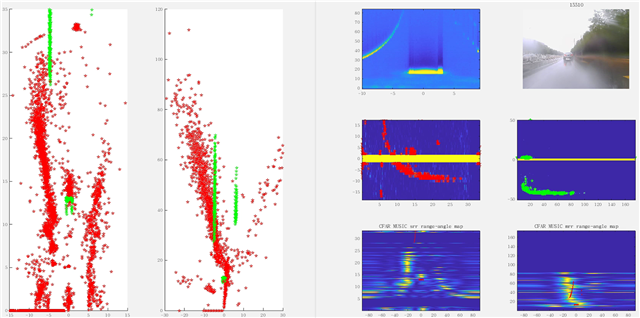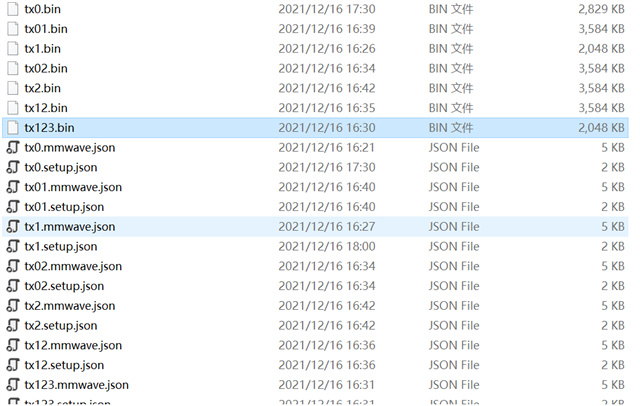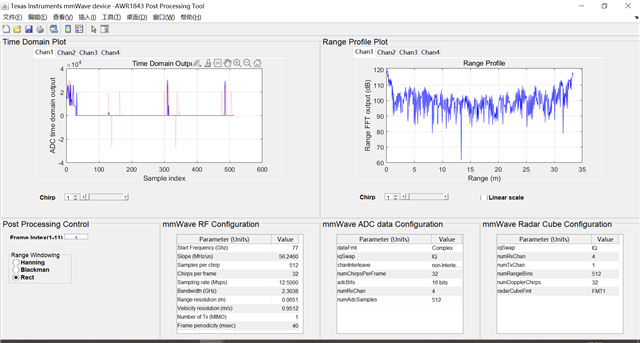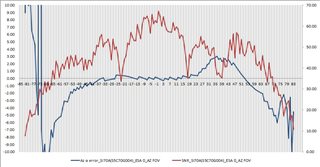Hi TI,
Does TI have any measurement report for angle accuracy vs. angle on AWR1843BOOST such as "System Performance Measurement With the mmWave Sensor" Figure 6, especially when the 3 TX are beam formed to transmit at the same time with all the same 0 degree phase?
We ask this because we find the angle accuracy becomes worse when we enable the 3 TX phase shifter to 0 degree at the same time, compared with the general MIMO without beamforming. What can be the root cause and how could we improve this?



